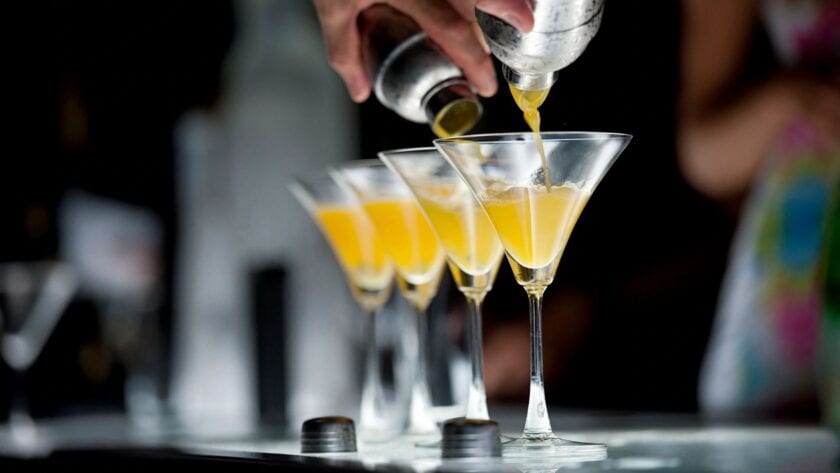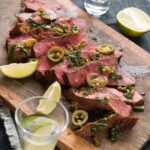Limoncello, the vibrant and zesty Italian liqueur, has long been a staple of Italian culture and cuisine. This bright, citrusy spirit, often served ice-cold as a digestif after meals, embodies the essence of Italy’s sunny Mediterranean coast. But limoncello is more than just a refreshing drink; it’s a symbol of Italian craftsmanship, tradition, and hospitality. Let’s take a journey into the origins and history of limoncello, and then dive into a Limoncello Recipe so you can make this famous liqueur at home.
The Origins of Limoncello
The exact origins of limoncello are a bit mysterious, with various regions along Italy’s Amalfi Coast, Sorrento, and the island of Capri claiming to be the birthplace of the beloved liqueur. What’s clear is that limoncello has been a part of southern Italian culture for centuries, its recipe passed down through generations.
Amalfi Coast Connection:
One of the most famous limoncello-producing regions is the Amalfi Coast, where lemon trees flourish in the Mediterranean climate. The area is known for its sfusato Amalfitano lemons, a unique variety that grows to a larger size and has a particularly aromatic and sweet zest—perfect for making limoncello. Locals have used these lemons not only in cooking but also for crafting liqueurs, with limoncello being the crown jewel.
Sorrento’s Claim:
Sorrento, another picturesque coastal town, also stakes a claim to limoncello’s origin story. Sorrento’s lemons, called femminello, are prized for their thick skins and rich oils, making them ideal for infusing spirits. According to one legend, local families in Sorrento have been making limoncello since the early 1900s, though some say its origins go back even further to monastic communities that used lemons to craft medicinal elixirs.
Capri’s Influence:
The island of Capri also plays a part in the limoncello tale. In the early 20th century, a local Capri woman named Maria Antonia Farace reportedly used a family recipe to make limoncello for guests staying at her small inn. Her descendants later turned the family recipe into a commercial venture, helping to spread limoncello’s fame beyond the shores of Capri.
How Limoncello is Made
The magic of limoncello lies in its simplicity. At its core, limoncello is made by infusing lemon peels in high-proof alcohol to extract the aromatic oils, which are then mixed with sugar syrup to create a sweet, citrusy liqueur. The secret to a great limoncello is using the best lemons—organic, unwaxed lemons with thick, fragrant skins are ideal.
Limoncello is traditionally served ice-cold, straight from the freezer, in small shot glasses, though shaken with ice is a wonderful way to serve as well. Its refreshing, sweet, and slightly bitter flavor makes it a perfect digestif after a hearty Italian meal, helping to cleanse the palate and aid digestion. Beyond being a standalone drink, limoncello can also be used in cocktails, desserts, or even drizzled over fresh fruit.
DIY Limoncello: A Recipe to Make at Home
While you can easily find limoncello in stores, there’s something special about making your own. Plus, it’s surprisingly easy to do. Here’s a simple recipe to make authentic limoncello at home, capturing the essence of Italy’s sun-drenched lemon groves in a bottle.
Ingredients:
- 10 organic lemons (preferably large, thick-skinned varieties like Amalfi or Sorrento lemons)
- 750 mL 100-proof vodka
- 4 cups water
- 3 cups granulated sugar
Instructions:
1. Peel the lemons:
Using a vegetable peeler, carefully remove the zest from the lemons. Try to avoid peeling too much of the white pith, as it can add bitterness to the final product. You want just the bright yellow outer layer.
2. Infuse the alcohol:
Place the lemon peels in a large glass jar or container and pour the alcohol over them, making sure the peels are fully submerged. Seal the jar and let it sit in a cool, dark place for at least 10 days (up to 30 days for a more intense flavor). Shake the jar gently every day to help the infusion process.
3. Make the sugar syrup:
After the infusion period, combine the water and sugar in a saucepan over medium heat. Stir until the sugar dissolves completely, then remove from heat and let the syrup cool to room temperature.
4. Strain the peels:
Once the alcohol has been fully infused with the lemon oils, strain out the peels using a fine-mesh strainer or cheesecloth. Discard the peels.
5. Mix and rest:
Combine the lemon-infused alcohol with the cooled sugar syrup, stirring to combine. Taste the limoncello; you can adjust the sweetness or add more water if necessary, depending on your preferences. Once mixed, transfer the limoncello into bottles and seal them tightly.
6. Age and serve:
Let the bottles of limoncello rest for at least a week in the fridge or freezer before serving. This aging process allows the flavors to mellow and meld together. Serve ice-cold, straight from the freezer, in small glasses.
The Future of Limoncello: Tradition Meets Modern Innovation
While limoncello remains a symbol of Italian tradition, it has also found a place in modern cocktails and culinary creations around the world. Bartenders are incorporating limoncello into innovative drinks, mixing its bright, citrusy flavor with herbs, bitters, or even gin for a refreshing twist. Chefs are using limoncello in desserts like gelato, cakes, and tarts, and even as a glaze for seafood dishes.
The beauty of limoncello lies in its versatility. Whether you enjoy it as a post-meal digestif or as a key ingredient in a cocktail, limoncello continues to captivate drinkers with its balance of sweetness, acidity, and sunny, citrus-forward flavors. By making your own at home, you can carry on the time-honored Italian tradition while putting your own personal spin on this beloved liqueur.
So, grab some fresh lemons and get started on your batch of homemade limoncello—you’ll be bringing a little taste of Italy into your own kitchen!



